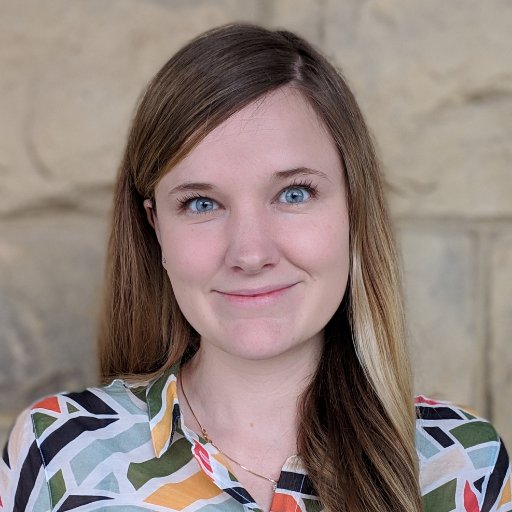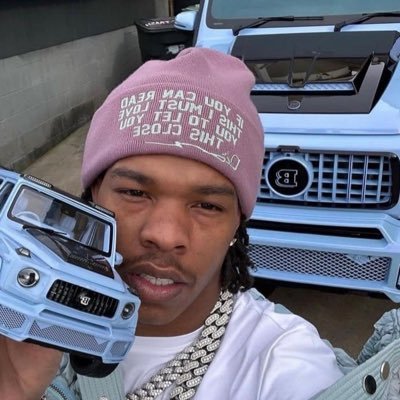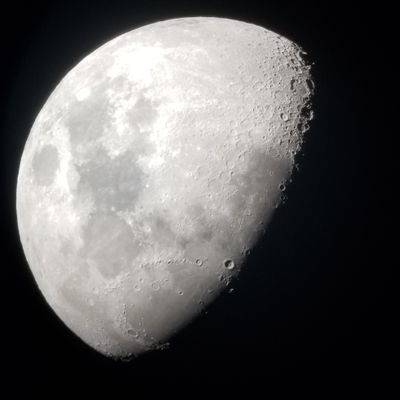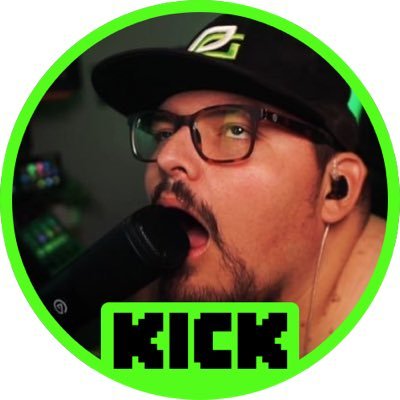
Bria Long, PhD
@brialong
Followers
1,565
Following
980
Media
30
Statuses
524
Interested in how we learn to derive visual meaning. @NIH K99 postdoc, Fall 2024 Asst. Prof. @UCSDPsychology . Mom x2. She/her. .
Stanford, CA
Joined July 2009
Don't wanna be here?
Send us removal request.
Explore trending content on Musk Viewer
Texas
• 232821 Tweets
Michigan
• 196427 Tweets
Mustafa Kemal
• 145044 Tweets
Notre Dame
• 94831 Tweets
#precure
• 46229 Tweets
Iowa
• 32721 Tweets
Northern Illinois
• 29019 Tweets
Sabalenka
• 28706 Tweets
#AEWAllOut
• 21927 Tweets
Auburn
• 21336 Tweets
Nebraska
• 20747 Tweets
#仮面ライダーガヴ
• 17220 Tweets
T-岡田
• 15481 Tweets
South Bend
• 13534 Tweets
#nitiasa
• 13308 Tweets
#ボクらの時代
• 11364 Tweets
Huskies
• 10967 Tweets
Last Seen Profiles
Pinned Tweet
I’m thrilled to share that I’ll be joining
@UCSDPsychology
as an Assistant Professor starting in July 2024! 🎉✨
This job is truly a dream come true. I feel beyond lucky to join such a wonderful department and to have the chance to build my own lab. (1/3)
61
29
492
Interested in how drawings of object categories change throughout childhood? Come by Friday morning at 11:50am at
#CogSci2018
to the early cognition session (Room MNQR)!
@judyefan
@mcxfrank
paper:
4
79
264
How might changes in children’s drawings reflect changes in their visual concepts? For our
#CogSci2019
paper (with
@judyefan
@mcxfrank
, ) we collected a large-scale database of children’s drawings (~13K) and analyzed changes in their visual features. (1/6)
3
58
174
📣 🎉Excited to announce that I'm recruiting graduate students and a postdoc to launch the Visual Learning Lab
@UCSDPsychology
in Fall 2024!
More information at —feel free to reach out with questions!
1
55
127
So excited to join UCSD at the same time 🎉🙌!
I'm thrilled to announce that next summer, I'll be starting as an Assistant Professor in the Department of Cognitive Science at
@UCSanDiego
.
I feel so fortunate to be joining such a wonderful department and research community. It's a dream I never dared to dream come true. (1/5)
88
29
572
2
1
103
Very excited to share that this paper with
@talia_konkle
, "Mid-level visual features underlie the high-level categorical organization of the ventral stream" is finally out! ($ wall).
5
26
85
Finally, if you find this kind of work interesting, I’m currently hiring!
I'm recruiting both a postdoc and a lab manager (more at ) to launch the Visual Learning Lab at
@UCSDPsychology
—please feel free to reach out (or come say hi at CDS)!
0
28
61
Excited to share that a new article with Mariko Moher, Susan Carey, and
@talia_konkle
is out at JEP:HPP ($wall, copy at ). We found evidence that preschoolers automatically process the real-world sizes of *depicted* objects (1/3)
2
12
54
Absolutely thrilled to announce that Jane Yang
@jane_yt_yang
will be an inaugural grad student in the Visual Learning Lab at
@UCSDPsychology
()!
I couldn't be more excited to have her join the lab and to get to do science together! Welcome Jane!!! 🎉🎉🎉
0
1
50
Excited to speak tomorrow at the
@svrhm2020
NeurIPS workshop (Dec 12th, 3pm PST/6pm EST) on my work with
@judyefan
, Zixian Chai, &
@mcxfrank
: "Parallel developmental changes in children's drawing and recognition of visual concepts." (1/8)
2
9
43
For now, if you’re struggling through the academic job market, I see you. This has been a long road, especially as an
#academicmama
of two.
Deeply grateful for the support of my family, friends, and mentors
@mcxfrank
@talia_konkle
@grez72
🙏 I wouldn’t be here without you! (3/3)
2
0
37
Wonderful summary by
@natvelali
of my recent work!
First Zoom sketchnotes! Fabulous talk by
@brialong
on what social cues are available within the infant’s view. Such a cool model and dataset. Turns out babies spend quite a lot of time looking at hands!
1
8
74
1
2
29
Congratulations, Talia!
@talia_konkle
🎉🎉🎉 You're
an incredible scientist and a wonderful mentor.
This award is so well-deserved!
1
2
26
So grateful for our partnership with
@PurpleMuseum
! Check out their blog post on our work with
@judyefan
@mcxfrank
on children's drawings And if you're in the San Jose area, you can visit our drawing station and their wonderful children's museum!
0
5
22
What a creative use of texforms! So fun to see these stimuli used to ask new and exciting experimental questions
1
2
16
So excited that my future department is hiring (I'm starting July 2024)!!
0
0
13
@andrewshtulman
@hardmaru
@mcxfrank
Linking to our conference paper here (& tagging
@jefan
) for those interested!
0
1
11
Follow
@natvelali
for lovely summaries of
#cogsci2018
talks!
Starting
#CogSci2018
with
@celestekidd
’s talk on the role of information and learning in exploration!
1
11
55
0
4
9
With an all-star team:
Sarah Goodin,
@kachergis
,
@V_Marchman
,
@SamaFRadwan
,
@rbzsparks
, Violet Xiang,
@ChengxuZhuang
, Oliver Hsu, Brett Newman,
@dyamins
, and
@mcxfrank
.
Working with
@daylightsf
& generously funded by
@SchmidtFutures
. (2/11)
1
2
8
Thanks for the great summary and the sketch
@natvelali
!
@brialong
’s
#CogSci2018
talk on how children’s drawings change through childhood: children’s drawings become more recognizable with age because they better capture relevant visual distinctions. Very cool work!
0
5
19
0
1
9
Many more details are in the paper and linked on the website: . We are currently collecting data and plan to share videos through
@databrary
!
Feel free to reach out with any questions! (11/11)
1
1
9
Looking forward to presenting and discussing at this seminar on Monday (7/11)—join us (it's free)!
On Mon 7/11 at 10AM PT: Our Dev Sci seminar featuring talks by
@Logan_Fiorella
("Motivation and metacognition in learning by drawing") &
@brialong
("Parallel developmental changes in children's production and recognition of drawings"), w/ broader discussion led by
@Moira_Dillon
!
1
0
3
1
3
7
@mariam_s_aly
Walking around (often with headphones on so others aren't confused who I'm talking to :)
2
0
7
@melissaekline
Thanks for talking about this openly! I also actively think about alternative career paths and encourage others to do the same. I’d love to land a faculty job, but the reality is that there *really* aren’t enough jobs for the number of qualified postdocs!
0
0
6
@melissaekline
@jdyeatman
@mcxfrank
@AnyaWMa
Thanks Melissa! This task is part of the GARDEN project so that is the plan — but we could always get it up and running earlier!
2
0
6
We installed a free-standing station at the Children’s Discovery Museum in San Jose (
@PurpleMuseum
), where we collected over 37,000 drawings from children 2-10 years of age, and also hosted a "guessing game" where children recognized each other's drawings. (3/8)
1
0
6
Highly recommend working with these two fabulous mentors and scientists 🙌
I'm hiring a postdoc in the Vision Sciences Lab at Harvard, run jointly with
@talia_konkle
. If you're interested in using deep neural network models to understand human visual processing & human intuitive physical reasoning, please apply here
0
46
92
0
0
5
@mcxfrank
@SbllDtrch
@DermotLynott
@cogsci_soc
Fairly sure SRCD didn't offer it this year, but VSS (vision sciences society) is offering it this May for the first time. I'm happy to help coordinate.
1
0
4
@ceptional
I think it's definitely something our community should focus on and that your talk/poster could be a great way to get conversations going!
1
0
5
@DrVicSimms
@rhodricusack
Preprint coming soon, but for now here’s a link to our CogSci paper!
1
0
4
We were inspired by the work of Caitlin Fausey
@UOLearningLab
revealing changes in how infants see faces and hands across early development—and by
@JohnFranchak
’s work documenting how both infant and caregiver posture jointly shape what’s in view for infants. (3/15)
1
0
4
@MGreenePhD
@IrisVanRooij
@mcxfrank
Thanks Michelle! and here is a link to the relevant cogsci paper if you’re interested!
0
0
4
@timothyfbrady
@catherineols
@talia_konkle
Yep unfortunately I can’t update the preprint but you can find a version on my website at
0
0
4
It’s also a testament to our wonderful partnership with the Children’s Discovery Museum of San Jose (
@PurpleMuseum
), where we installed a free-standing drawing station that you can still visit today! Over two years, we collected >37,000 drawings made by 2-10 year old children.
2
0
3
We installed a free-standing drawing station at the Children’s Discovery Museum in San Jose (
@PurpleMuseum
), where over two years we collected >37,000 drawings from 48 categories, drawn by children 2-10 years of age. (3/13)
1
0
3
Children’s unrecognizable drawings still contained rich information—both animacy and object size were decodable in drawings made by children of all ages (consistent with my work with
@taliakonkle
suggesting animacy/size can be inferred without basic-level identification). (9/13)
1
0
3
@Mark_A_Thornton
@PNASNews
@talia_konkle
Thanks Mark! While people can sometimes tell their animacy/size in the real-world, texforms are unrecognizable at basic-level.
0
0
3
@JhendersonIMB
But I think that you need both (1) carefully controlled stimuli and (2) alternative models to start making meaningful claims (2/2)
1
0
3
@AaronHertzmann
@hardmaru
Hi! We find that children not only get better at including diagnostic features in their drawings but that children *also* get better at using these same visual features when recognizing each other's drawings
1
0
3
@ashleyruba
@EvelinaLeivada
Hi 👋 I don’t think this is black and white. I'm still in my postdoc (still learning and still love the work) but I really think there’s no way I would have had the same job opportunities after my PhD vs postdoc. My computational and data science skill sets have vastly expanded.
1
0
3
Come be part of this amazing team!
Job posting draft
#Dyslexia
#edtech
@StanfordEd
be a part of building bridges from academia to public education working with a dynamic and collaborative team creating the next generation of open-source technology to support learning differences
0
4
11
0
0
3
@JhendersonIMB
Well, we've found that texture-like representations do a surprisingly good job at explaining some visual cognitive behaviors and some portion of neural responses to objects. So I don't think it's that crazy that deep CNN layers will sometimes do the same thing... (1/2)
1
0
2
@RuthRosenholtz
Took me a full 3ish weeks before I felt normal tbh. Hope you feel like yourself soon!
0
0
2
@mcxfrank
@naitisb
@StanfordCSLI
Seconded! Very thankful for your contributions to our project and the lab!
0
0
2
When reviewing, I often want to ask for a direct replication of the primary findings, especially if there isn't one built in to the paper. But what if these data aren't easy to collect (e.g., developmental / fMRI data)? It's OK to recommend replication if...
Very surprising results
22
High-prestige journal
5
Always; editor decides
20
Never; not appropriate
6
3
1
2
@DeonTBenton
My guess is current weight rather than birth weight, but I don’t know the age of the child!
0
0
2
@vayzenberg90
@bluevincent
Would check out great work by
@joshuacpeterson
that deeply considers what these labels should be -- not sure if he has an open source list though
0
0
2








































































